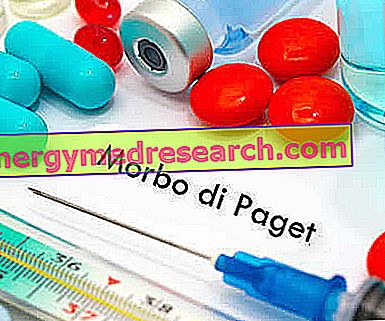Definition
The sharp drop in arterial pressure values can occur following a rapid change in position, from sitting to standing upright: in this case, we speak of orthostatic hypotension. More precisely, orthostatic hypotension proper occurs when the pressure reduction exceeds 20 mmHg of the maximum pressure and 10 mmHg of the minimum.
Causes
Orthostatic hypotension is essentially caused by the sudden change of position, from sitting / lying to standing; the condition occurs more often in the elderly, in Parkinson's and hypertensive patients.
Lying-upright position change → blood draw in the legs → blood stagnation in the legs → inability of the venous system of the legs to oppose the call of blood + impossibility of returning blood to the other anatomical sites → decrease in the return of blood to the heart
- Risk factors: immoderate intake of hypotensive drugs, cardiac deficits, diabetes, dehydration, degenerative neurological diseases (eg Parkinson's disease), varicose veins
Symptoms
Symptoms associated with orthostatic hypotension can include: confusion, weakness, blurred vision, fainting, dizziness.
Information on Orthostatic Hypotension - Drugs for the Treatment of Orthostatic Hypotension is not intended to replace the direct relationship between health professional and patient. Always consult your doctor and / or specialist before taking Orthostatic Hypotension - Drugs for Orthostatic Healing.
drugs
When orthostatic hypotension is caused by the administration of particular drugs, it is necessary to intervene by modifying the dosage of these, clearly after consulting a doctor. As we have seen, orthostatic hypotension could depend on dehydration, therefore a reintegration of liquids is indispensable. Among the other possible non-pharmacological treatments, it is important to remember the importance of wearing elastic stockings in order to facilitate the return of blood to the heart.
As for drug therapy, many drugs, even belonging to different classes, can help to lighten the symptoms and overcome the disorder; the choice of a drug instead of another depends, of course, on the cause that caused the orthostatic hypotension.
In the case of orthostatic hypotension, it is advisable to correct eating habits and to prefer certain foods rather than others, since they can affect the regulation of blood pressure. An affected person or at risk of ascertained orthostatic hypotension should prefer foods such as:
- infusions based on coffee, cola, guarana, maté, black tea, rich in caffeine
In case of hypotension, it is recommended not to drink alcohol, since alcohol favors the reduction of blood pressure.
- Ephedrine (eg Argotone, Deltarinolo, Rinovit): the drug is a sympathetic-mimetic, indicated for the treatment of orthostatic hypotension. Begin therapy with a dose of 25-50 mg, to be taken every 3-4 hours. Do not exceed 150 mg per day. Alternatively, it is also possible to take the drug intramuscularly or subcutaneously, at an indicative dose of 25-50 mg, every 3-4 hours; again, the drug can be taken intravenously, at a dose of 5-25 mg (infusion duration: 15 minutes). Again, do not exceed the daily dose of 150 mg. Consult your doctor for any clarifications.
- Midodrine (eg Gutron): belongs to the class of sympathetic-mimentic / vasopressor drugs, able to activate alpha-1 receptors in blood vessels. It determines a peripheral vasoconstriction which, as a consequence, increases the pressure. As an indication, take 10 mg of oral active, three times a day. Doses should not be taken less than three hours apart. Alternatively, the drug can be taken in a single dose of 20 mg, per os. The dose can increase up to 30 mg a day. The drug is generally prescribed for patients suffering from severe orthostatic hypotension, which does not benefit from the administration of other drugs. Consult your doctor.
- Noradrenaline (eg Noradr Con FN): belonging to the catecholamine class, the drug is indicated to cancel the effects given by orthostatic hypotension. It is recommended to start therapy with 2-4 mcg of drug per minute. The maintenance dose should be established by the doctor based on the severity of the condition and the patient's response to treatment; in general, the maintenance dose varies from 1 to 12 mcg per minute.
- Phenylephrine (eg Isonephrine, Phenyl CL DYN, Triaminic FLU, Nasomixin CM): the drug belongs to the pharmacological class of Sympathomimetics (Alpha-adrenergic agonists). It is widely used in therapy also as a decongestant for the treatment of nasal congestion and rhinitis; the administration of these drugs induces an increase in blood pressure values, decreasing the symptoms that accompany the disorder. In general, the dosage indicated for hypotension involves taking 2-5 mg of active, every 1-2 hours, as needed, subcutaneously or intramuscularly. For intravenous infusion, start anti-hypotensive therapy at a dose of 100-180 mcg per minute. The maintenance dose can vary from 40 to 60 mcg per minute. Alternatively, take 0.5 mcg / kg per minute. Consult your doctor.
- DL-threo-dihydroxyphenylserine (eg Droxidopa): sympathetic-mimetic drug useful for increasing endogenous noradrenaline synthesis. The drug is not marketed in Italy.
- Fludrocortisone (eg Florinef): synthetic mineralocorticoid used in therapy also to increase pressure in the context of orthostatic hypotension. Taking the dosage of 0.1-0.5 mg / day it seems to positively increase the arterial pressure, stimulating the peripheral vasoconstriction. It is recommended to take a right dose of sodium, in combination with this medication. For the elderly and / or affected by myocardial alterations, the administration of Fludrocortisone is not always recommended, since it increases the risk of heart failure.
- Desmopressin (eg Minirin / Ddvap): it is a synthetic analogue of vasopressin, able to carry out the same therapeutic activities but with a longer duration of action and with fewer side effects. By increasing the plasma volume, the drug reduces the excretion of sodium with the urine, therefore the volume of circulating blood increases, as does the arterial pressure. Indicatively, take 0.2-0.6 mg of active, once a day, before going to bed.
Below are some behavioral rules, useful for avoiding crises of orthostatic hypotension:
- Sleep with the headboard raised
- Do not stand up too long
- Change position (from lying to standing) slowly
- Exercise regularly at moderate intensity
By putting these simple general guidelines into practice, the patient, especially when elderly, can prevent relapses of orthostatic hypotension



